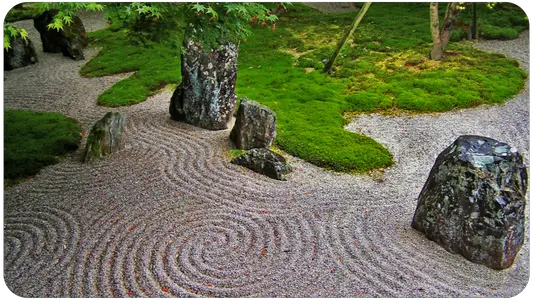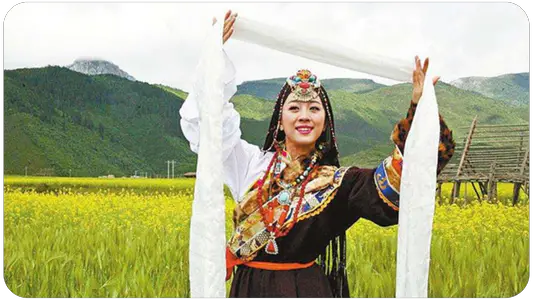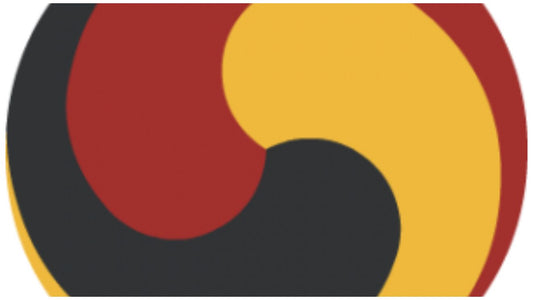Mahakashyapa (Sanskrit, IAST Mahā Kāśyapa) or Mahā Kassapa, Mahakassapa (Pali) is one of the ten most important disciples of Shakyamuni Buddha, recognized as the most advanced in ascetic practices and his knowledge of rules in detail (dhutavādānam).
He became guardian of the order of the Community in the absence of Gautama Buddha and after his death. He is said to have convened and presided over the first council. He is considered the first patriarch of Chan / Zen. The sixth chapter of the Lotus Sūtra predicts that he will become a Buddha by the name of Raśmiprabhāsa.
In China he is known as Mohejiashe 摩訶迦葉, phonetic translation of Mahā Kāśyapa or Dajiashe 大迦葉, great Kāśyapa, his name in Japan is Makakaso.
In Buddhist monasteries, generally speaking, statues of Mahā Kāśyapa and standing Ananda stand alongside the statue of the seated Shakyamuni Buddha.
Various current historians, among many chronologies, date the events: -563 the Buddha was born, -483 upon the Buddha's death Mahakashyapa became the leader of the Buddhist Community, -482 he organized the first Buddhist council.
Youth
He was born in the village of Mahatittha in Magadha, to a rich brahmin named Kapila and his wife Sumanadevi; his first name was Pippali and his gotta Kosiya or Kassapa. When he reached the age of marriage, he declared that he wanted to remain celibate.
At the insistence of his parents, he made it known that he would only accept a woman identical in every way to a golden statue he had made. In the village of Sagala, they found the rare pearl, Bhadda Kapilani. Bhadda and Pippali had in fact been husband and wife for several previous existences, and together they had taken a vow before Padumuttara to be disciples of a Buddha.
They decided by mutual agreement not to consummate the marriage and took care of Pippali's parents together until their death. Some time later, they both realized the impermanence of life in the same day, as they went about their business.
They left home together, and to leave no doubt about the firmness of their resolve, immediately went their separate ways. Bhadda went to Titthiyarama near Jetavana, where she lived as an ascetic for five years until the female order was founded.
The Buddha, aware of the event thanks to his prescience, awaited the coming of Pippali, whom he ordered. Maha Kassapa was a choice recruit because he possessed seven of the marks that characterize a Buddha.
From then on, he appears in the sources only as "Kassapa the Great", to distinguish him in particular from Kumara Kassapa, "Kassapa the Young".
Gautama took him to Rajagaha, capital of Maghada. On the way, they stopped under a tree; Maha Kassapa offered his outer robe to the Buddha as a cushion, and the Buddha gave him the robe he was wearing in exchange, a rag that had been left behind in a cemetery by a slave girl.
The earth shook when the ancient Brahmin put on the robe, showing how extraordinary this moment was, for he alone had received such a gift. He vowed to observe the thirteen austere precepts (dhutanga) and became an arahant eight days later.
Monk
Place in the Sangha
Like all of the Buddha's important disciples, Maha Kassapa had the powers of idhi, but to a lesser degree than others, and the canon sometimes depicts him in ignorance of certain things.
He was distinguished, however, in his knowledge of monastic rules and his ability to maintain discipline in the community; the Buddha himself recognized that he was his equal in this area.
His efforts were not always well received: the monk Thullananda, for example, reproached him for blaming Ananda and publicly reminded him of his "heretical" past.
One day when Ananda took him to preach to the nuns, the nun Thullatissa remarked unkindly that he should have let Ananda do the preaching because he was no match for him.
The Kutidusaka Jataka even relates that Ulunka Saddaka, one of his disciples, enraged by his reproaches, once set fire to his hut in his absence. He himself observed the rules scrupulously, rejecting even at an advanced age all proposals made to him to lighten his asceticism.
Men and gods, recognizing him as an exemplary monk, hurried to make offerings of food to him. It even happened that one day when he was walking in the company of the Buddha, women neglected him to give only to Maha Kassapa.
In the Mahayana tradition of Chan and Zen, he is attributed with a special gift of intuition, for he is said to be the only one who understood the wordless teaching given by the Buddha on Vulture Mountain, according to the Lankavatara Sūtra (version, page?): the Buddha took an Udumbara flower between his fingers (blooming every three thousand years, according to the legend), and twirled it wordlessly.
Maha Kassapa, at that moment, was the only disciple to understand the essence of the Buddha's mind, and responded with a smile, which manifested his deep understanding, which the Buddha then recognized. This story, in the Chan and later Zen traditions, expresses the transmission of the Dharma directly from mind to mind (in Japanese: i shin den shin 以心傳心).
He learned of Gautama's parinirvana seven days after the event on his way from Pava to Kusinagar, when he came across a member of the ajivaka sect holding a mandara flower (one of the trees of paradise) that had fallen from the sky upon his death.
He vowed that he and his companions would arrive in time, and indeed, the Mallas of Kusinagar had no way of lighting the funeral pyre. When Maha Kassapa arrived at the head of all the disciples, the feet of the Buddha appeared so that they could pay their last respects to him, after which the pyre lit itself. Maha Kassapa brought his share of the relics to King Ajatasattu.
Council
Shortly after Gautama's death, Maha Kassapa heard Subhadda, a monk who had joined the order when he was already old, advise his companions to rejoice in the death of the great ascetic, who was freeing them.
He then undertook to gather in Rajagaha during the next rainy season the monks who were already arhats, in order to proceed to a solemn recitation of the teachings of the Buddha and the rules of the Community; those who were not yet arhats were asked to go and spend their retreat in another place.
A crisis arose: Ananda's presence was considered indispensable because, as the Buddha's personal assistant, he was the one who had retained the most of his words, but he was not yet an arhat.
Encouraged by Maha Kassapa, he worked hard and attained enlightenment just in time to make his entrance at the last moment at the recitation site, receiving Maha Kassapa's warm approval.
This did not, however, prevent Maha Kassapa from publicly chastising him for his overly broad criteria for candidates for the monastic life and his active role in the entry of women into the sangha.
He presided over the recitation, better known as the first council, or therasangiti in the Theravada tradition. Upali was in charge of the recitation of the vinaya and Ananda of the sutras.
Disappearance
Maha Kassapa is said to have died at the age of 120. One of his teeth is said to be embedded in a dagoba (stupa) of the Bhimatittha Vihara near Bentota in Sri Lanka.
But according to northern tradition, without having died he entered deep samadhi in Mount Kukkutagiri (Deccan), awaiting the advent of Maitreya in order to transmit to him the robe (Kāṣāya) of Buddha.





